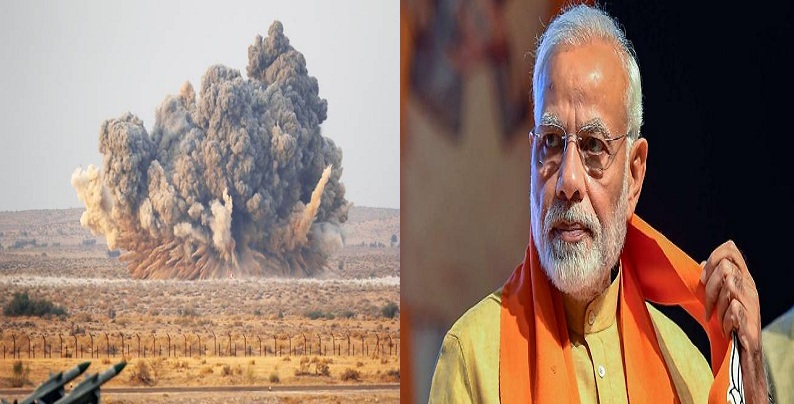
Indian Air Force’s operation against Jaish-e-Mohammad in Balakot of Khyber Pakhtunkhwa province in Pakistan on the intervening night of Monday and Tuesday was a successful one and had hit four buildings – targeting campus of Madrasa Taleem-ul-Quran, says a report. However, any assessment of terrorists killed in the attack ‘purely speculative’ as there are limitations of technical intelligence and lack of ground intelligence at this point.
According to the report, published in the Indian Express, IAF’s Mirage-2000 fighter jets in operation on early Tuesday morning had hit the Madarsa campus with five S-2000 precision-guided munition (PGM). The daily quotes that intelligence agencies have evidence to show four buildings the images of the destroyed spot in the form of imagery from Synthetic Aperture Radar (SAR).
It further points out that buildings were on the campus of the madrasa run by Jaish. These buildings were the ones located on the same ridge line as the hilltop – a few hundred metres to the east. Though Pakistan had confirmed that IAF jets struck the area, but have been on a denial mode stating ‘neither there were terror camps or nor was any damage’.
Questioning Pakistan’s action about sealing Madarsa after the attack, the official said, “Why did the Pakistan Army seal the madrasa after the strike? Why did it not allow journalists to visit the madrasa? We have evidence in the form of SAR imagery to show that a building used as a guest house, where brother of Maulana Masood Azhar used to stay; an L-shaped building where trainers used to stay; a double-storied building used to house students entering the seminary and another building where those undergoing final combat training used to stay, were hit by the bombs.”
The IB official also stated SAR images are not as clear as satellite pictures and it is for the political leadership to decide if it wants to release that imagery. The official also stated that the images are ‘classified information’ and making them public would settle the debate, provided the Union ministry wants. Adding more, the official pointed out that madrasa was selected carefully as it was in the middle of nowhere.
Briefing the details of the Israeli bombs – S-2000, used in the attack – the official said, “It first penetrates through the roof, then enters the building and explodes after a delay. It is meant to hit the command and control centres and does not destroy the building. The software has to be programmed with the type of roof – its thickness, material of construction etc. – and that, accordingly, sets the delay period for the PGM.” Adding more, official explained, S-2000 is a highly accurate, jammer-proof bomb which works precisely even under heavy cloud cover.
The government official stated that SAR imagery shows roofs of Madarsa had gone missing – made of corrugated galvanised iron (CGI) sheets – on the first day after IAF stuck on it.

Post Your Comments